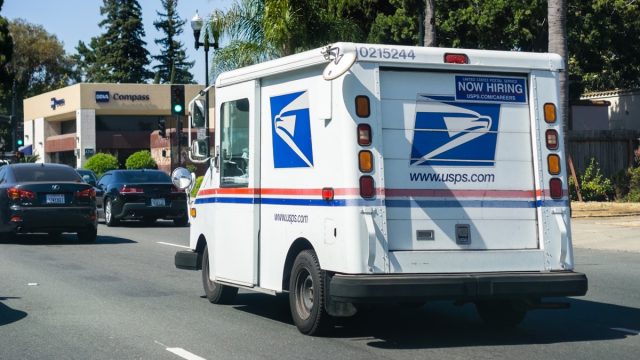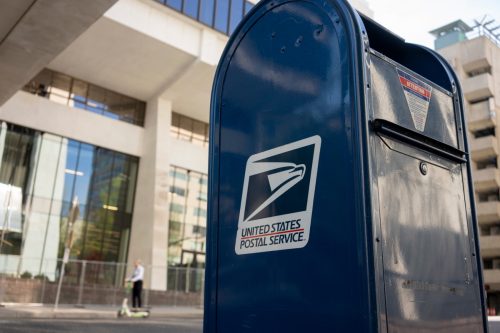If You Get This Delivery Warning From the USPS, Don’t Open It, Experts Warn

From two-day shipping to next-day shipping to the impossibly fast same-day shipping, many of us have grown less and less patient when it comes to getting our packages. Even if you’re not reliant on quicker shipping methods, you likely still find yourself checking for updates on your deliveries. In 2017, the U.S. Postal Service (USPS) rolled out its Informed Delivery feature, which allows customers to preview their incoming mail and track packages down to the minute when they’re scheduled to arrive. But despite postal employees working to aid you in this age of instant gratification and constant communication, your desire to have minute-by-minute updates on your deliveries could put you in danger. Read on to find out more about a delivery warning from the USPS you should not open.
READ THIS NEXT: USPS Just Sent Out This Major Warning About a “Serious Threat” to Everyone.
The Postal Service has given customers several warnings in the past year.

The USPS has made a number of changes to its service over the past few months, and it is has been warning us that it’s still planning to make more as the year goes on.
In April, the agency warned customers that it would start slowing down delivery times for almost a third of its First-Class Packages in May—increasing the time it takes for certain packages to get to you by one or two days. Then in May, Postmaster General Louis DeJoy announced that the Postal Service will continue to raise postage rates over the next few years, warning customers to prepare to start seeing these costs increase at an “uncomfortable” rate.
But customers should be cautious about one warning from the USPS.

There’s more than just slowed-down deliveries and rising costs to worry about. Consumers need to be aware of a rising messaging scam targeting those waiting for deliveries from the USPS. A May 31 report from Snopes explains that this scheme starts with someone receiving a text message claiming there is an unspecified problem that means their package “cannot be delivered.” The message will direct them to pay a fee to resolve the issue through a link disguised to look like a USPS website, according to fact-checking site.
You might have trouble realizing that you’ve been sent to a fake website, because it often include letters from the USPS acronym, like “USP,” in its URL. “Such websites have been designed to look just like the official post office website, USPS.com. However, unless a website’s URL contains the exact spelling of USPS.com, it’s likely a scam,” Snopes warned.
RELATED: For more up-to-date information, sign up for our daily newsletter.
There are likely to be several errors in these scam messages.

A website pretending to be affiliated with the USPS is not the only sign that you’re dealing with a scam. According to Snopes, all the text messages they reviewed in connection with the Postal Service scam were written with several mistakes. The USPS previously warned customers in 2020 that messages with poor grammar, spelling errors, calls for immediate action, and requests for personal information are usually scams, Fox 6 Now Milwaukee reported.
“All of the text messages we reviewed in the Postal Service scam appeared to have been written with poor grammar. Further, messages that mentioned a specific owed fee either didn’t include a dollar sign or placed the symbol after the price,” the experts at Snopes explained. “Both of these writing characteristics indicated that people outside of the U.S. might be running the scam.”
The USPS has also directly warned users about suspicious texts.

The Postal Service does offer consumers tools to track their specific packages, like its Informed Delivery feature. But according to the U.S. Postal Inspection Service (USPIS), customers are required to register online or initiate a text message themselves with their tracking number in order to receive a text about their package.
“USPS will not send customers text messages or e-mails without a customer first requesting the service with a tracking number, and it will not contain a link,” USPIS warns. “So, if you did not initiate the tracking request for a specific package directly from USPS and it contains a link: don’t click the link!”
According to the law enforcement arm of the USPS, fraudsters involved in these text message scams are usually looking to get personal information from you. This may include account usernames and passwords, your social security number, date of birth, your credit and debit card information, and any personal identification numbers. “This information is used to carry out other crimes, such as financial fraud,” USPIS explains.
READ THIS NEXT: USPS Is Getting Rid of This Service, Starting July 10.